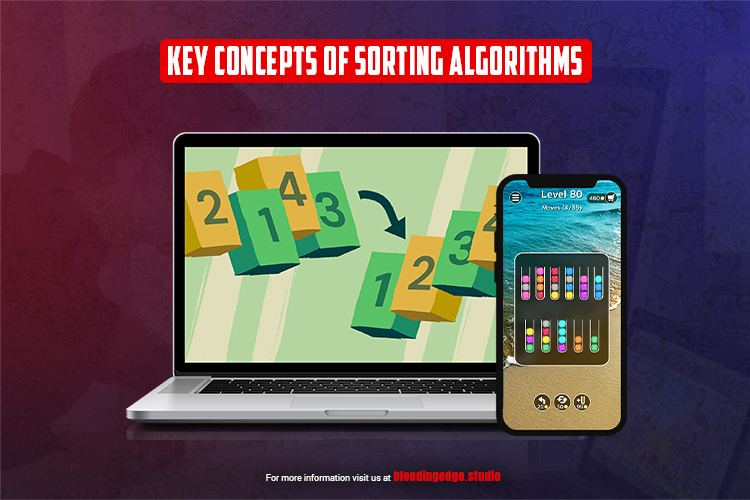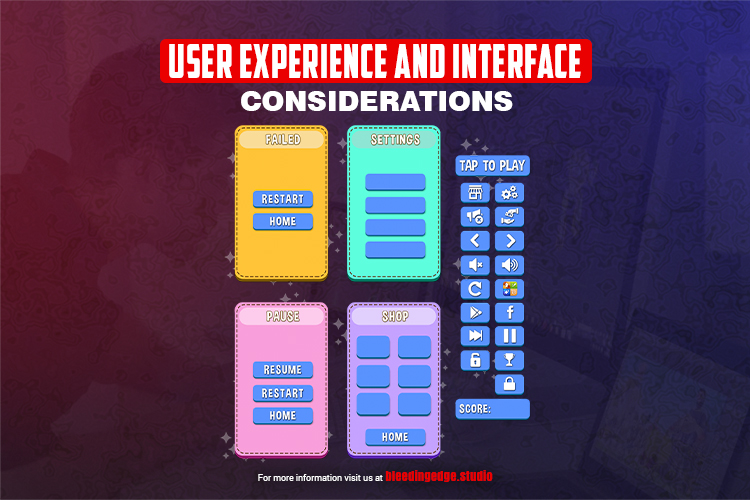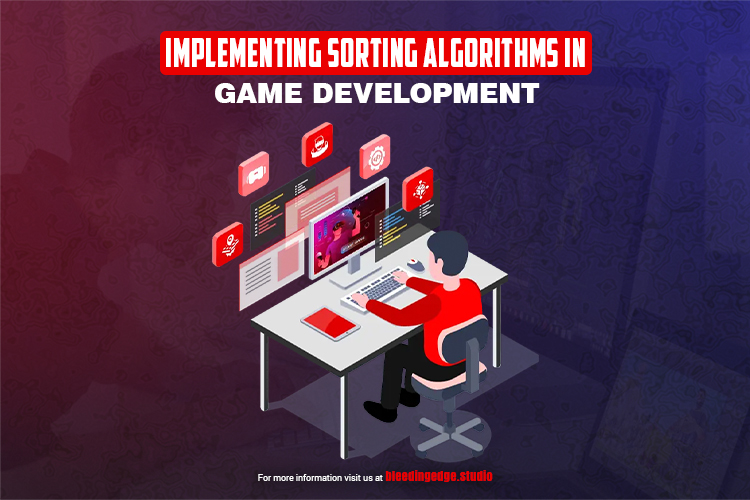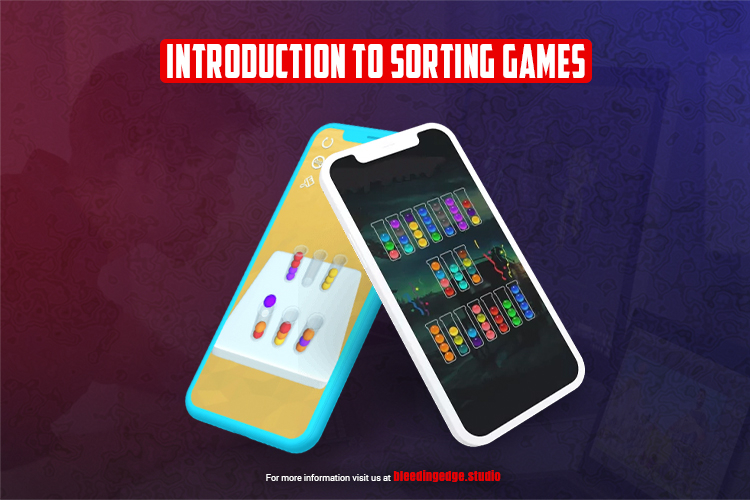Sorting games are a timeless and effective way to engage learners of all ages. From preschoolers learning basic categorization to adults refining their analytical skills, sorting activities offer a hands-on approach to understanding patterns, relationships, and organization. Whether you’re an educator, a game developer, or simply someone interested in creating compelling educational experiences, mastering the art of sorting games can greatly enhance the effectiveness and enjoyment of your learning materials. In this comprehensive guide, we’ll explore the key components of creating engaging sorting games.
Understanding the Importance of Sorting Games
Before delving into the specifics of creating sorting games, it’s essential to understand why they are valuable learning tools. Sorting activities:
- Develop Cognitive Skills: Sorting games help players develop critical thinking skills, such as categorization, pattern recognition, and logical reasoning.
- Promote Conceptual Understanding: By sorting objects or information into categories, learners gain a deeper understanding of the underlying concepts and relationships.
- Foster Engagement: Interactive and visually appealing sorting games capture learners’ attention and motivate them to participate actively in the learning process.
- Encourage Collaboration: Many sorting games can be designed for group play, promoting collaboration, communication, and teamwork among players.
Key Components of Engaging Sorting Games
When creating sorting games, consider incorporating the following elements to maximize engagement and learning outcomes:
- Clear Objectives: Clearly define the objectives of the sorting game, whether it’s sorting objects based on color, shape, size, or any other criteria. Communicate these objectives to players to provide them with a sense of purpose and direction.
- Variety of Challenges: Offer a variety of sporting challenges to deal with different skill levels and learning objectives. Gradually increase the complexity of the tasks as players progress to keep them challenged and motivated.
- Interactive Feedback: Provide immediate feedback to players to reinforce correct sorting decisions and offer guidance in case of errors. Positive reinforcement encourages players to continue learning and experimenting.
- Engaging Visuals: Utilize visually appealing graphics, animations, and interactive elements to enhance the gaming experience. Bright colors, intuitive interfaces, and visually distinct categories make sorting games more enjoyable and accessible.
- Customization Options: Allow players to customize their sorting experience by adjusting difficulty levels, choosing different sorting criteria, or selecting themed categories. Personalization enhances player engagement and accommodates diverse learning preferences.
- Progress Tracking: Implement a progress tracking system to allow players to monitor their performance and track their achievements over time. Clear feedback on progress motivates players to strive for improvement and mastery.
- Incorporate Narrative: Integrate storytelling elements or thematic contexts into the sorting game to create a compelling narrative framework. A well-crafted storyline adds depth and context to the sorting tasks, making them more meaningful and memorable for players.
Tools and Platforms for Creating Sorting Games
Fortunately, there are various tools and platforms available for creating sorting games, even for those without extensive programming skills. Some popular options include:
- Game Development Engines: Software such as Unity, Unreal Engine, and GameMaker Studio provides powerful tools for creating interactive sorting games with customizable features and visual effects.
- Educational Game Design Platforms: Platforms like Scratch and Kodu Game Lab offer user-friendly interfaces and drag-and-drop functionality, making it easy to design and share educational sorting games.
- Online Game Creation Platforms: Websites like Sploder, Gamefroot, and Construct offer browser-based tools for designing and publishing sorting games without the need for coding.
- Mobile App Development Tools: Tools like Appy Pie, Buildbox, and Thunkable enable users to create sorting games for mobile devices with intuitive drag-and-drop interfaces and built-in templates.
Key Concepts of Sorting Algorithms
Sorting algorithms are fundamental to computer science and are used extensively in various applications, including data processing, database management, and information retrieval. Understanding the key concepts of sorting algorithms is essential for developing efficient and scalable sorting solutions. In this section, we’ll explore some of the fundamental concepts underlying sorting algorithms:

- Time Complexity: Time complexity refers to the amount of time an algorithm takes to execute as a function of the input size. Sorting algorithms are often evaluated based on their time complexity, which provides insights into their efficiency and scalability. Common time complexity notations include O(n^2) for quadratic algorithms like Bubble Sort and Insertion Sort, O(n log n) for efficient algorithms like Merge Sort and Quick Sort, and O(n) for linear algorithms like Counting Sort and Radix Sort.
- Space Complexity: Space complexity refers to the amount of memory an algorithm requires to execute as a function of the input size. Sorting algorithms may have varying space complexity depending on whether they operate in place or require additional storage. In-place algorithms, such as Quicksort and Heap Sort, have a space complexity of O(1) since they sort the elements within the original array without using additional memory. However, algorithms like Merge Sort may require O(n) extra space for temporary storage during the sorting process.
- Stability: Stability is a property of sorting algorithms that determines whether equal elements maintain their relative order after sorting. A stable sorting algorithm preserves the original order of equal elements, whereas an unstable algorithm may change their order. For example, suppose two elements with the same value appear in the input array. In that case, a stable sorting algorithm will always place the element that appeared earlier in the original array before the other element with the same value.
- Comparison-based vs. Non-comparison-based Sorting: Sorting algorithms can be classified into two broad categories based on their underlying approach to sorting elements. Comparison-based sorting algorithms, such as Bubble Sort, Selection Sort, and Merge Sort, rely on pairwise comparisons between elements to determine their relative order. Non-comparison-based sorting algorithms, such as Counting Sort, Radix Sort, and Bucket Sort, exploit specific properties of the input elements (e.g., integer keys) to achieve linear time complexity without direct comparisons.
- Adaptability: An adaptable sorting algorithm is capable of adjusting its strategy based on the characteristics of the input data to achieve better performance. For example, Insertion Sort is often more efficient than other algorithms for sorting nearly sorted or small-sized arrays due to its adaptability to partially sorted inputs. Adaptive sorting algorithms dynamically adapt their behavior during execution to optimize performance in specific scenarios.
- Stability: Stability is a crucial characteristic of sorting algorithms that ensures the preservation of the relative order of equal elements in the sorted output. A stable sorting algorithm guarantees that elements with the same key value maintain their original order as they appeared in the input array. Stability is particularly important in scenarios where preserving the initial order of equivalent elements is necessary, such as sorting database records by multiple attributes.
- Parallelism and Scalability: With the advent of multi-core processors and distributed computing environments, sorting algorithms that can effectively leverage parallelism have become increasingly important. Parallel sorting algorithms are designed to exploit parallel processing capabilities to improve performance and scalability on multi-core architectures and distributed systems. Techniques such as parallel partitioning, parallel merging, and load balancing are employed to distribute the sorting workload across multiple processing units efficiently.
User Experience and Interface Considerations
In addition to understanding the underlying concepts of sorting algorithms, it’s crucial to consider user experience (UX) and interface design when developing sorting applications or games. A well-designed user interface can greatly enhance usability, engagement, and overall satisfaction with the sorting experience. Here are some key considerations for designing an effective sorting application interface:

- Intuitive Interaction: The sorting interface should be intuitive and easy to use, even for users with minimal technical knowledge. Provide clear instructions and visual cues to guide users through the sorting process. Use familiar metaphors, such as drag-and-drop gestures or button clicks, to facilitate interaction and reduce cognitive load.
- Feedback and Progress Indicators: Incorporate feedback mechanisms to inform users of their progress and help them understand the impact of their actions. Display visual indicators, such as progress bars, counters, or animated effects, to signify successful sorting operations or highlight errors. Real-time feedback reinforces learning and encourages users to continue engaging in the sporting activity.
- Customization Options: Allow users to customize their sorting experience by adjusting parameters such as sorting criteria, sorting direction (ascending or descending), and visualization preferences. Providing customization options empowers users to tailor the sorting interface to their preferences and learning goals, enhancing their sense of ownership and engagement.
- Accessibility Features: Ensure that the sorting interface is accessible to users with diverse abilities and needs. Incorporate features such as keyboard navigation, screen reader compatibility, and adjustable font sizes or color contrasts to accommodate users with visual or motor impairments. Designing for accessibility promotes inclusivity and ensures that all users can participate in the sporting experience.
- Visual Design and Aesthetics: Pay attention to the visual design of the sorting interface to create a visually appealing and engaging user experience. Use consistent color schemes, typography, and visual hierarchy to enhance readability and clarity. Employ animation and interactive elements sparingly to add interest and interactivity without overwhelming the user.
- Error Handling and Recovery: Anticipate potential errors or edge cases that users may encounter during the sorting process and provide clear error messages and recovery options. Guide users through error resolution steps and offer assistance, such as hints or contextual help, to help them overcome challenges and continue sorting effectively.
- Performance Optimization: Optimize the performance of the sorting interface to ensure smooth and responsive user interaction, especially when sorting large datasets or complex objects. Employ efficient algorithms, data structures, and rendering techniques to minimize latency and maximize responsiveness. Consider implementing asynchronous processing or lazy loading mechanisms to handle resource-intensive sorting tasks gracefully.
- Multi-platform Compatibility: Design the sorting interface to be compatible with various devices and screen sizes, including desktops, laptops, tablets, and smartphones. Implement responsive design principles to adapt the layout and functionality of the interface dynamically based on the device’s screen size and orientation. Ensure cross-browser compatibility and test the interface thoroughly on different platforms to ensure a consistent user experience.
By prioritizing user experience and interface design considerations, developers can create sorting games applications and games that are not only functional and efficient but also engaging, accessible, and enjoyable for users of all backgrounds and abilities. Investing time and effort in crafting a user-centered sorting interface can lead to increased user satisfaction, retention, and learning outcomes.
Implementing Sorting Algorithms in Game Development
Integrating sorting algorithms into game development can provide players with interactive and educational experiences while reinforcing their understanding of algorithmic concepts. Whether used as a core mechanic or as a supplementary feature, sorting algorithms can add depth and challenge to games while fostering critical thinking and problem-solving skills. Here’s how to effectively implement sorting games algorithms in game development:

- Selecting Suitable Sorting Algorithms: Choose sorting algorithms that align with the gameplay mechanics and objectives of your game. Consider factors such as the complexity of the sorting task, the size and type of data to be sorted, and the desired level of challenge for players. For simple sorting tasks with small datasets, consider algorithms like Bubble Sort or Insertion Sort. For more complex sorting challenges or larger datasets, opt for efficient algorithms like Merge Sort or Quick Sort.
- Integrating Sorting Mechanics: Determine how sorting mechanics will be incorporated into the gameplay loop of your game. Sorting tasks can serve as standalone challenges, mini-games within a larger game, or integral components of gameplay progression. For example, players may need to sort inventory items by type or value to optimize their resources in a strategy game, or they may be tasked with sorting incoming objects by color or shape to prevent a puzzle grid from overflowing in a casual arcade game.
- Designing Engaging Sorting Puzzles: Create engaging sorting puzzles that provide players with meaningful challenges and opportunities for experimentation. Design levels or scenarios with varying degrees of difficulty gradually introduce new sorting criteria, constraints, or obstacles as players progress. Incorporate thematic elements, narrative context, or visual storytelling to enhance the immersion and enjoyment of sorting puzzles.
- Providing Feedback and Rewards: Offer immediate feedback to players as they engage in sorting tasks, indicating whether their sorting decisions are correct or incorrect. Celebrate successful sorts with visual and auditory cues, such as animations, sound effects, or congratulatory messages. Provide rewards, such as points, achievements, or unlockable content, to incentivize players to complete sorting challenges and achieve mastery.
- Implementing Visualization and Interaction: Develop intuitive user interfaces and interactive controls for sorting tasks, allowing players to manipulate and interact with the sorting elements seamlessly. Provide visual representations of the data to be sorted, such as draggable objects, sortable lists, or sortable grids, to enhance comprehension and engagement. Implement responsive feedback mechanisms, such as real-time updates to sorting progress or dynamically generated hints, to guide players and facilitate learning.
- Balancing Difficulty and Progression: Strike a balance between challenge and accessibility by carefully designing the difficulty curve and progression of sorting challenges throughout the game. Gradually increase the complexity of sorting tasks and introduce new mechanics or constraints to keep players engaged and motivated. Offer optional hints, tutorials, or adaptive difficulty settings to accommodate players of different skill levels and learning styles.
- Testing and Iteration: Playtest sorting mechanics extensively to identify potential usability issues, gameplay imbalances, or unintended consequences. Gather feedback from players and iterate on the design, adjusting sorting algorithms, puzzle designs, and interface elements as needed to enhance player satisfaction and enjoyment. Continuously refine and optimize sorting mechanics based on player feedback and data analytics to improve the overall gaming experience.
By implementing sorting games algorithms in game development thoughtfully and creatively, developers can create immersive and educational gaming experiences that entertain, challenge, and inspire players while reinforcing fundamental algorithmic concepts. Whether used as a standalone mechanic or as part of a larger gameplay experience, sorting games algorithms can enrich games with strategic depth, cognitive stimulation, and lasting educational value.
Conclusion: Crafting Memorable Sorting Experiences for Players
Incorporating sorting games algorithms into game development offers a unique opportunity to create engaging, educational, and memorable experiences for players. By leveraging the principles of game design, academic pedagogy, and algorithmic theory, developers can craft sorting games that entertain, challenge, and inspire players while fostering critical thinking, problem-solving, and computational skills. As we conclude this discussion, let’s recap some key points for crafting memorable sorting experiences for players:
- Educational Value: Sorting games provide an interactive platform for learning fundamental algorithmic concepts in a fun and engaging way. By integrating sorting challenges into gameplay mechanics, developers can help players develop analytical thinking, pattern recognition, and decision-making skills while exploring the intricacies of sorting algorithms.
- Engaging Gameplay: Designing sorting puzzles and challenges with diverse objectives, mechanics, and levels of difficulty ensures that players remain entertained and motivated throughout the gaming experience. Incorporating thematic elements, narrative context, and visual storytelling enhances immersion and adds depth to sorting games.
- User Experience: Paying attention to user experience and interface design is essential for creating intuitive, accessible, and enjoyable sporting experiences. Providing clear instructions, responsive feedback, and customizable options allows players to engage with sorting tasks effortlessly while accommodating diverse learning preferences and abilities.
- Balanced Challenge: Balancing the difficulty curve and progression of sorting challenges ensures that players are appropriately challenged and rewarded as they advance through the game. Offering a mix of familiar and novel sorting tasks, as well as optional hints and adaptive difficulty settings, accommodates players of varying skill levels and encourages continued engagement.
- Feedback and Rewards: Providing immediate feedback and meaningful rewards for successful sorting operations reinforces learning and motivates players to overcome challenges. Celebrating achievements with visual and auditory cues, such as animations, sound effects, and unlockable content, enhances player satisfaction and encourages repeat play.
- Continuous Iteration: Iterating on sorting mechanics based on player feedback and testing results allows developers to refine and optimize the gaming experience over time. Incorporating new sorting algorithms, mechanics, and content keeps the game fresh and engaging for players while ensuring long-term enjoyment and replayability.
By embracing these principles and practices, developers can create sorting games that leave a lasting impression on players, sparking curiosity, fostering learning, and igniting a passion for algorithmic exploration. Whether sorting jewels in a fantasy adventure, organizing artifacts in a museum exhibit, or classifying creatures in a scientific expedition, sorting games have the power to entertain, educate, and inspire players of all ages and backgrounds. So, roll up your sleeves, unleash your creativity, and embark on a journey to craft unforgettable sorting experiences for players around the world.
For more topics, see https://bleedingedge.studio/blog/

